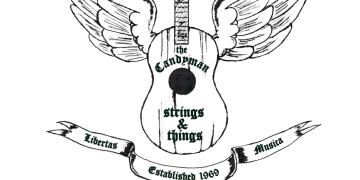
Following trends is akin to catching a falling knife; at best, it’s a tricky proposition. Looking back in early 2020 on yearly trend projections, at least 90 percent of them were wrong. No doubt, before COVID-19, some felt the industry would morph into a more “virtual route,” but nobody could have predicted what transpired. Now that we are in the winter months of COVID and hopefully dialing up to a better 2021, where do we go from here? I believe that’s anybody’s guess.
Where are you placing your bets? And how do you read the signs for tomorrow’s opportunities in the current environment of COVID-19, which is beleaguered and challenged by health concerns, economic distress, political turmoil, and social strife? Personally, I am intrigued by the exodus of companies from the big cities. It has fast become a trend, and it may offer small town dealers a good opportunity. However, with every change we see a domino effect.
Have you heard about the proposed five percent telework tax? The discussion has started! The idea is to tax teleworkers because of the lost revenue to the various state and local municipalities. It is hard to predict whether that will happen. However, it is worth noting that according to Kate Lister, president of Global Workplace Analytics, “Our best estimate is that 25 to 30 percent of the workforce will be working from home multiple days a week by the end of 2021.” It seems that many people are enjoying the idea of working from home. They feel more centered, are more productive, and would pay the tax just to have the flexibility and the enjoyment of continuing to work from home. Again, for every action there is a consequence, and with this change there could be financial impact. When traditional formats are interrupted, tax law changes could soon follow. I am not an expert, so I would suggest that it might be a good idea to attend an Alan Friedman seminar at the next NAMM Show.
When we attempt to read the tea leaves, where do we see green shoots?
How about a small-town town council meeting? What do they do with their COVID-19 grant money? I was privy to a town council meeting where the members discussed the idea of re-investment in the town’s advertised image. The town wants to attract new businesses – precisely the ones who are escaping the urban areas.
The potential clients would be tech companies that are trying to provide a better quality of life for their employees outside of the metropolitan areas. Big cities are losing their allure. Look no further than San Francisco, New York, or Washington D.C. Once shining beacons for attracting a flurry of activity, they seem to be losing a great deal of their luster.
These council members discussed the possibility of investing in designing new marketing materials to address the increased interest from businesses considering a move away from the city. They want to market an image that projects the town as quaint and safe – a town where people walk, a town with smart retail and good schools, a town that promotes high quality businesses with vibe, acumen, unique offerings, and smart customer service models.
The isolation facet of COVID-19 has certainly created an environment where people are craving human interaction. People want genuine, old-fashioned service. Thus, the big box retail model of cheaper, faster, better, with no expertise or service is under enormous stain now.
Will the new trend hold?
When we lose the privilege of simple human interaction, we really must reconsider the former lifestyle privileges we mostly took for granted. Seriously, I would gladly stand in a DMV line for 30 minutes versus making an appointment online and waiting a month to be serviced. I believe it’s fair to say the shopping experience, interacting with people and employees at a small, independently owned store, is what wins the day. What changed that experience was the big box model that, until recently, had won the day with volume. And until COVID-19 hit, we had become slaves to that increasingly fast technology at our fingertips, making us an instant gratification society. A point to ponder: maybe that’s what’s changing; maybe the new trend will be human interaction.
One thing is certain: technology will be at the forefront of any trend going forward.
This is where things get tricky for mom-and-pop style shops. Technology has gained momentum, and while it is true that we have a refreshed appreciation for human interaction, we still want everything our way and delivered yesterday. That won’t change – in fact, it will escalate.
However, this, too, may help small dealers. Think of it as embracing the DYI mentality. Along with being tech savvy, nothing is more game-changing than specialized knowledge, and when you blend both skills together, you have more impact on outcome.
Small dealers, like small towns, are quick to adjust to changes.
Small dealers are faster than the big box competition because we don’t have to do things through teams or committees – we don’t have to ask permission. We may not have the deep pockets, but we have the acumen. We have the specialized knowledge, the passion, and we generally have the support of the communities and towns we live in. We watch for trends and we listen, we feel, and we consider. We are also fast learners, and if there is a technology we need to learn, just like the Shade Tree Mechanic, we learn it.
We know the road ahead won’t be easy, but if COVID-19 taught us anything, it has taught us to expect the unexpected and to pay attention to trends early and watch for the green shoots.
Menzie Pittman is the owner and director of education at Contemporary Music Center in Virginia (CMC). Following a performance and teaching career spanning more than 32 years, he founded CMC in 1989 and continues to perform, teach, and oversee daily operations. He has 50 years of musical experience as a drummer and drum instructor. Menzie is a frequent speaker at NAMM’s Idea Center, and a freelance writer for MMR’s “Small Business Matters.”
























